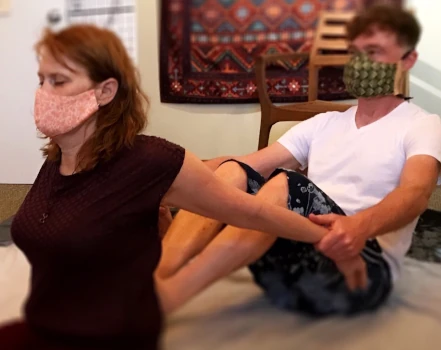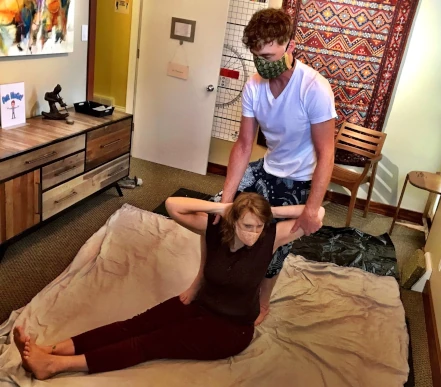Thai Massage: What it is and What You Can Expect
Thursday, July 09, 2020, 11:15 AM
What Is Thai Massage?
An NHPC life member and well-known Thai massage expert, Paul Buffel explains the practice as "a dance between the client and the practitioner."
It can be more technically described as a series of stretches and strokes performed on clothed clients who are positioned on floor mats or low tables. Thai massage is used mainly to open the client's joints and stimulate blood flow.

Throughout our daily lives, disruptions in the body occur and can be caused by things like injuries or consuming junk food. Buffel describes these as a "wall" that your body finds a way to work around it instead of over.
A Thai massage treatment will assist your body in breaking down these walls, allowing energy to flow and your body to heal. "When these walls are broken down, the body is allowed to adapt to internal and external factors in the most efficient way possible," says Buffel.
Where did this dance come from? Thai massage was developed over 2,500 years ago in Thailand and is influenced by Chinese Meridian Theory and Ayurvedic medicine. Over time, these medicinal theories evolved into Thai medicine, with four branches: massage, diet, medicines and herbs, and spiritual practice.
Thai massage also has a close relationship with yoga. This can be seen represented in stone carvings in some temples in Thailand. These carvings visually describe the 104 movements and postures of Thai massage. Due to this connection, some practitioners call the practice Thai yoga massage.
What Can You Expect at Your Thai Massage Appointment?
Thai massage is typically performed on a floor mat but can also be done on a table. Clients remain fully clothed throughout the treatment.
In a typical session, clients progress through four positions: on their back, on their front, side-lying, and sitting. Hand techniques are used throughout to assist in muscle relaxation.

"It is much more interactive between the practitioner and the client than a traditional massage" explains Buffel. He shared that his clients feel both relaxed and energized at the same time. They leave the treatment feeling focused instead of relaxed or sleepy, as is common after a regular massage.
After treatment, the practitioner might provide clients with specific yoga stretches or movements that can assist in further healing at home.
Who can benefit from Thai massage?
People from all walks of life can benefit from a Thai massage treatment. It is most often explored for increasing range of motion, improving circulation, releasing chronic tension, and encouraging optimal energy flow. However, it can also be explored for flexibility, headaches, and back pain.
Interested in trying Thai massage? Check out the NHPC Member Directory to find a practitioner in your area.

